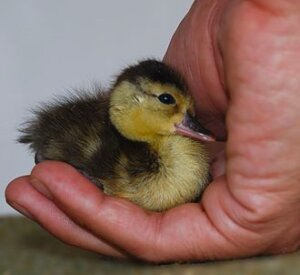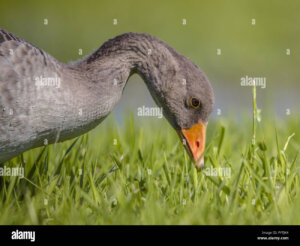Common Name for Madagascar Pochards: Discover the Rare Aythya Innotata
The Madagascar Pochard is a rare duck species. It is critically endangered and found only in Madagascar.
This bird has a few common names, which vary by region and culture. These unique ducks are not just another bird. They are a symbol of Madagascar’s unique biodiversity. Sadly, their population declined due to habitat loss and other human activities.
Conservation efforts are now underway to save them. Knowing the common names for Madagascar Pochards helps in these efforts. It connects people to the cause and raises awareness. This blog will explore the different names and their significance. Understanding these names can help in appreciating the importance of this endangered species.

Credit: www.researchgate.net
Introduction To Madagascar Pochards
The Madagascar Pochard is a rare diving duck found in Madagascar. This species, also known as Aythya innotata, was once thought to be extinct. Conservation efforts have revived their population, making them a symbol of hope for endangered species.
Brief History
The story of the Madagascar Pochard is both fascinating and tragic. These ducks were abundant in the early 20th century. By the late 1990s, they were believed to be extinct. In 2006, a small group was discovered on Lake Matsaborimena. This discovery sparked a major conservation effort.
| Year | Event |
|---|---|
| 1929 | Large populations documented |
| 1990s | Believed to be extinct |
| 2006 | Rediscovered on Lake Matsaborimena |
Conservationists began breeding programs to save the species. Today, the population is slowly recovering.
Significance Of The Name
The name “Madagascar Pochard” holds great significance. It reflects the bird’s exclusive habitat in Madagascar. The term “pochard” refers to a group of diving ducks known for their unique feeding habits.
- Madagascar: Indicates the bird’s native island
- Pochard: Describes their diving behavior
The name embodies the bird’s identity and its connection to Madagascar’s ecosystem.

Credit: www.facebook.com
Habitat And Distribution
The Madagascar Pochard is one of the rarest ducks in the world. Its habitat and distribution are crucial for its survival. Knowing where it lives helps in conservation efforts.
Natural Environment
The Madagascar Pochard prefers freshwater lakes. It thrives in clear, deep waters. These lakes often have abundant aquatic plants. The plants provide food and shelter. The duck also nests in thick, marshy vegetation. Such environments are crucial for breeding and raising young.
In the past, the species was found in various parts of Madagascar. Now, it is limited to a few remote locations. Human activities have destroyed much of its natural habitat. Conservationists work hard to protect and restore these areas.
Current Population Status
The current population of Madagascar Pochards is very low. Recent estimates suggest fewer than 100 individuals remain. This makes it critically endangered. Conservation programs are in place to help increase their numbers. Breeding programs in captivity aim to reintroduce the species into the wild.
Field surveys track the duck’s population and health. Researchers monitor its habitat conditions. They also work with local communities. The goal is to create a safe environment for the ducks. Every effort counts in saving this rare species.
Conservation Efforts
The Madagascar Pochard is a critically endangered duck species. Conservation efforts are crucial to save this unique bird from extinction. Various organizations are working tirelessly to protect and breed these birds. Efforts have been made to restore their natural habitat and ensure their survival. Let’s explore the initiatives in place to safeguard the Madagascar Pochard.
Protection Initiatives
One of the main protection initiatives is habitat restoration. Conservationists work to restore and maintain wetlands. These wetlands provide a natural habitat for the Madagascar Pochard. Local communities are also involved in these efforts. They help monitor the ducks and protect their environment. This collaboration helps in creating a safe space for the birds to thrive.
Breeding Programs
Breeding programs play a key role in conservation. Zoos and conservation centers around the world participate in these programs. They provide a controlled environment for breeding. This increases the population of Madagascar Pochards. Special care is taken to ensure the chicks grow healthy and strong. Once they are ready, the birds are released back into the wild. These programs are essential to prevent the species from going extinct.
Future Of Aythya Innotata
The Madagascar Pochard, or Aythya Innotata, faces a challenging future. This rare duck, once thought extinct, is on the brink of survival. Conservation efforts are underway to secure its place in the wild. The journey ahead involves overcoming significant obstacles and fostering hope for recovery.
Challenges Ahead
The Madagascar Pochard faces habitat loss. The wetlands they call home are shrinking. Human activities like agriculture and urban development contribute to this loss. Pollution also poses a threat. Contaminated water affects their food sources and nesting sites.
Climate change adds another layer of difficulty. Changes in weather patterns disrupt their breeding cycles. Increased temperatures and altered rainfall impact their habitats. These environmental shifts make survival even harder for the pochards.
Hope For Recovery
There is hope for the Madagascar Pochard. Conservationists have initiated breeding programs. These programs aim to increase their numbers in captivity. Once stable, they release these ducks back into the wild.
Local communities play a crucial role too. Education programs raise awareness about the importance of wetlands. Community involvement ensures sustainable practices that protect the birds’ habitats. Together, these efforts offer a chance for the Madagascar Pochard to thrive.

Credit: www.britannica.com
Frequently Asked Questions
What Is A Madagascar Pochard?
The Madagascar Pochard is a critically endangered diving duck species found only in Madagascar.
Why Is The Madagascar Pochard Endangered?
The Madagascar Pochard is endangered due to habitat loss, pollution, and predation.
Where Can You Find Madagascar Pochards?
Madagascar Pochards are found in a few lakes in Madagascar, notably Lake Sofia.
What Do Madagascar Pochards Eat?
Madagascar Pochards primarily eat aquatic invertebrates, small fish, and plant matter.
Conclusion
The Madagascar Pochard is a rare and special duck. It needs our attention. By learning its common name, we help raise awareness. Every small action counts. Protecting these birds protects our planet. Let’s cherish and conserve our natural world. The future of Madagascar Pochards depends on us.
Spread the word. Share your knowledge. Together, we can make a difference.
Hello Dear, I'm Poli Kolymnia, owner of many birds (including budgies).
With a deep passion for these feathered companions, I'm here to share my expertise and extensive knowledge on birds care.
My articles cover essential topics like diet, housing, care, and health, providing practical tips to help you create a happy and thriving environment for your birds.




